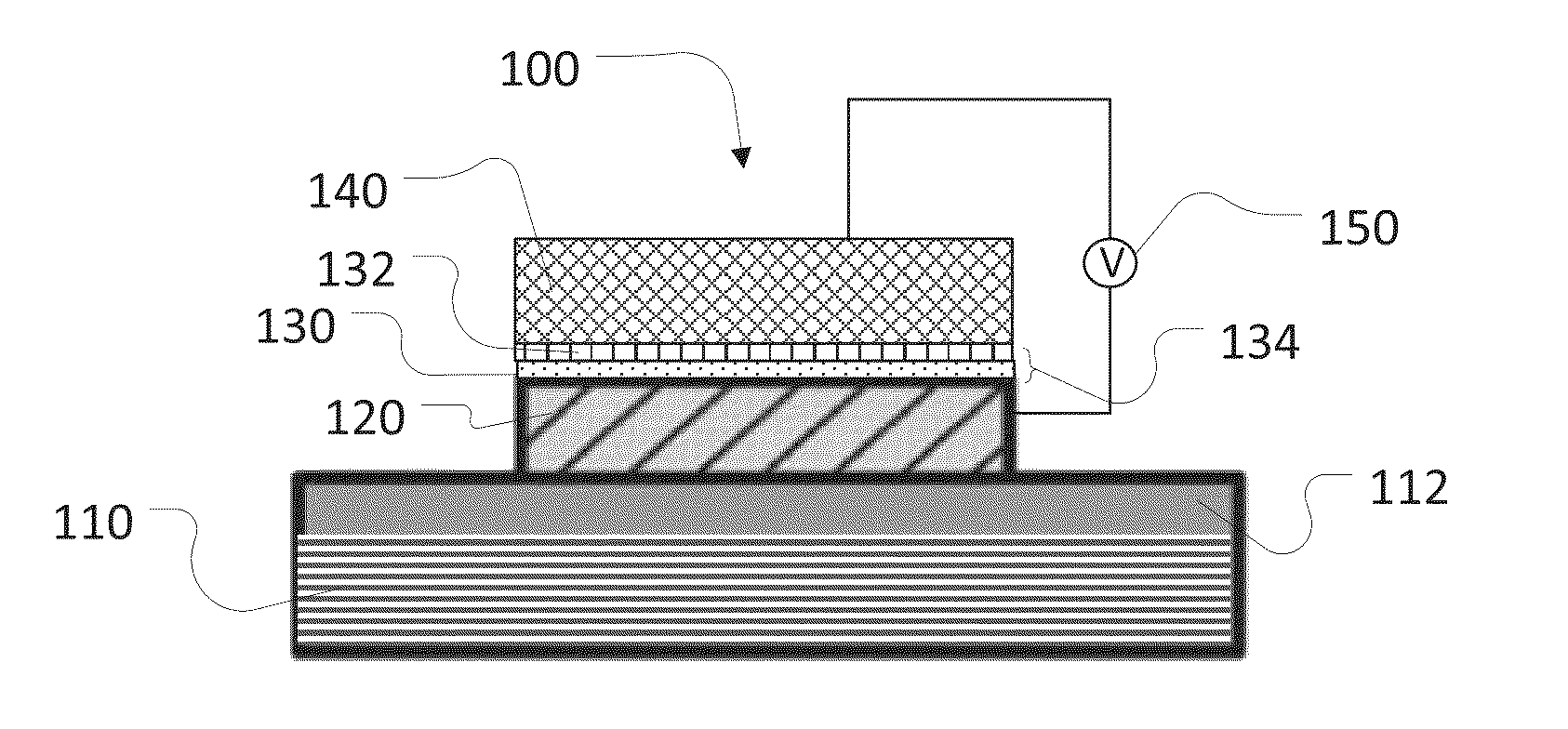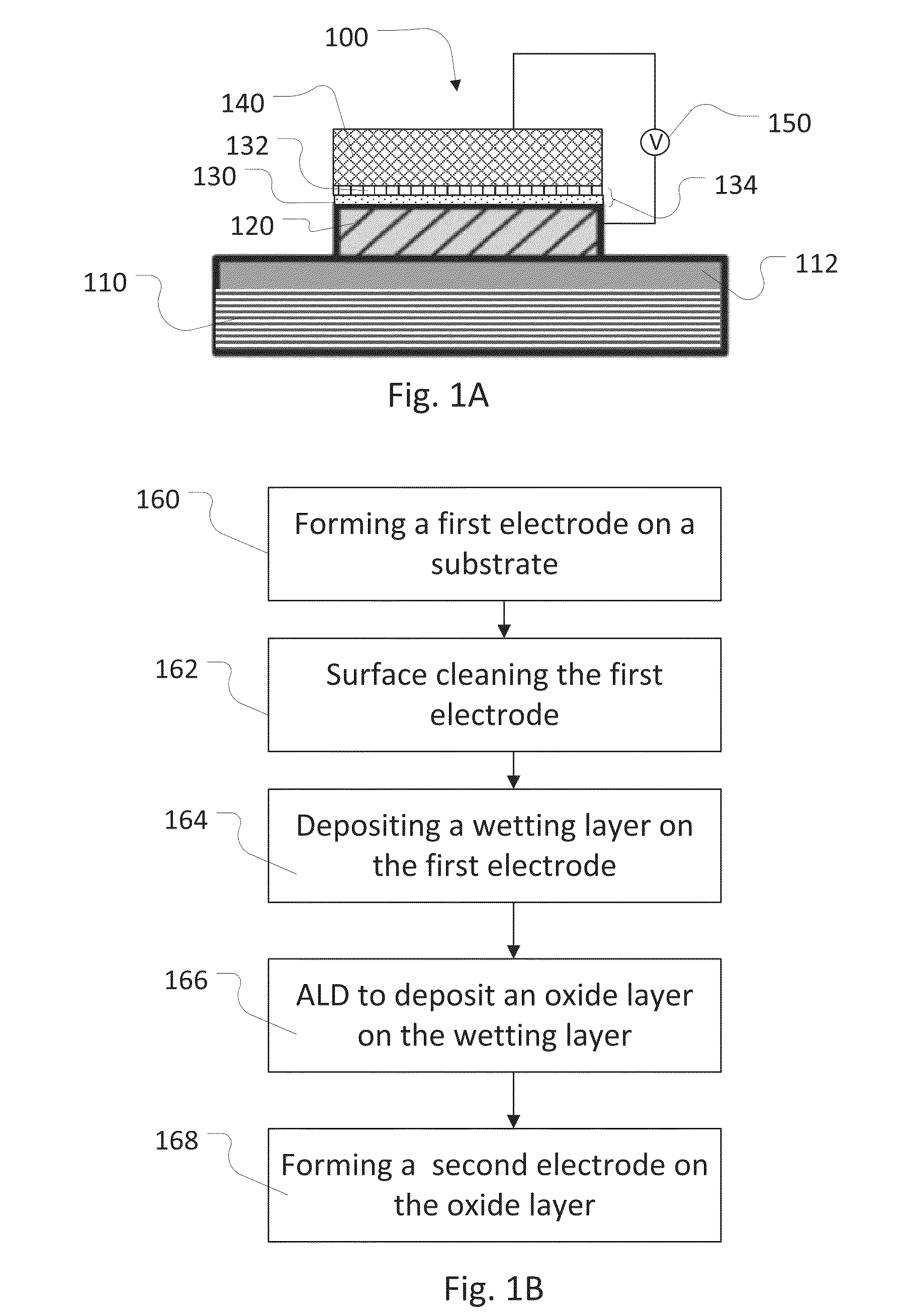Tunnel junction fabrication
a technology of tunnel junctions and fabrication lines, applied in the direction of instruments, superconductor devices, heat measurement, etc., can solve the problems of limiting device performance and affecting junction quality, and achieve the effects of eliminating, or high quality
- Summary
- Abstract
- Description
- Claims
- Application Information
AI Technical Summary
Benefits of technology
Problems solved by technology
Method used
Image
Examples
Embodiment Construction
[0022]FIG. 1A shows a schematic of a normal-insulating-superconducting (NIS) junction 100. A substrate 110 supports a first electrode 120 that is deposited on the substrate. A wetting layer 130 is deposited on the first electrode 120, and an oxide layer 132 is deposited on the wetting layer 130. The wetting layer 130 and the oxide layer 132 together form a tunnel junction barrier 134. A second electrode 140 is deposited on the tunnel junction barrier 134. The first electrode 120 is formed of a normal (i.e., non-superconducting) material, for example, gold (Au). The second electrode 140 is formed of a superconducting material, for example, aluminum (Al). In other words, the NIS junction 100 is formed by the three components: the first electrode 120, which is a normal conductive metal layer, the tunnel junction barrier 134, which separates the first electrode 120 from the second electrode 140, and the second electrode 140, which is a superconducting metal layer. The substrate 110 can ...
PUM
| Property | Measurement | Unit |
|---|---|---|
| thickness | aaaaa | aaaaa |
| area | aaaaa | aaaaa |
| thickness | aaaaa | aaaaa |
Abstract
Description
Claims
Application Information
 Login to View More
Login to View More - R&D
- Intellectual Property
- Life Sciences
- Materials
- Tech Scout
- Unparalleled Data Quality
- Higher Quality Content
- 60% Fewer Hallucinations
Browse by: Latest US Patents, China's latest patents, Technical Efficacy Thesaurus, Application Domain, Technology Topic, Popular Technical Reports.
© 2025 PatSnap. All rights reserved.Legal|Privacy policy|Modern Slavery Act Transparency Statement|Sitemap|About US| Contact US: help@patsnap.com



